Samsung Gear S3 Frontier review: Lots of features, not enough apps
$350 gets you a great design and a very limited ecosystem.
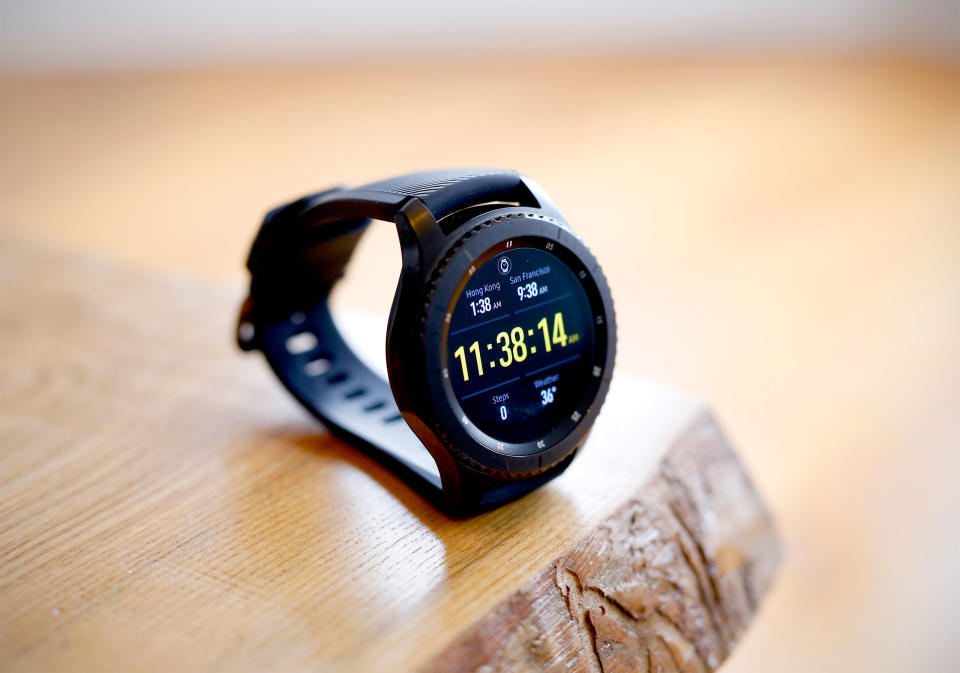
It seems like everyone is talking about how the smartwatch market is collapsing, but that hasn't stopped Samsung from taking another stab at high-end wearables. Who could blame them, really? Last year's Tizen-powered Gear S2 was full of good ideas, from that rotating bezel to its compatibility with non-Samsung Android phones. Not trying to build on that foundation would have been a shame.
Enter the Gear S3 Frontier. It's a bigger, better, more refined take on Samsung's smartwatch formula, and the company threw in every feature it could think of. That rationale is Samsung through and through, and it makes the Gear S3 worthy of your consideration, even if now might not be the best time to buy a smartwatch.
Hardware
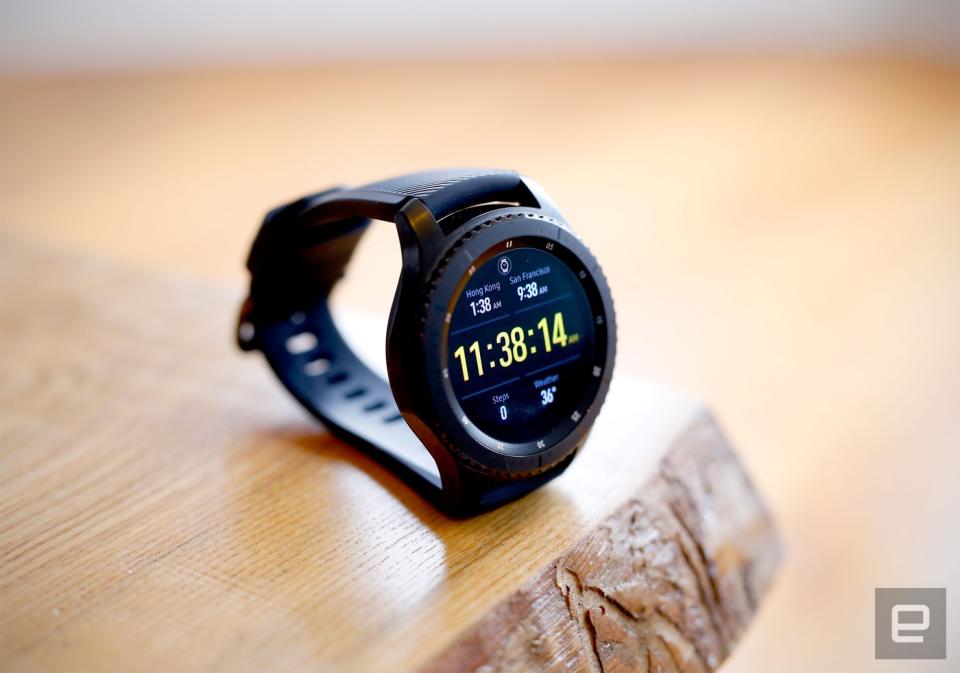
Last year's Gear S2 had a sleek, pseudo-futuristic vibe -- so much so that the white model I reviewed looked like a prop straight out of THX 1138. Samsung ditched that clean aesthetic this time around -- the S3 Frontier rocks a rugged look, with a knurled, rotating bezel and a chunky stainless-steel body. More often than not, people who saw the S3 on my wrist thought it was just a well-built mechanical timepiece. If you're like me and enjoy thoughtful mashups of old and new, the S3 certainly scratches that itch. That is, unless you like your watches nice and thin.
Indeed, the Gear S3 Frontier is a big watch, and it won't work on every wrist. That's not just because of the bright, 1.33-inch Super AMOLED display either. Between an integrated LTE radio and a relatively large 380mAh battery, the Gear S3 could not have been much smaller. Speaking of the screen, it's a real standout -- it can display up to 16 million colors (up from the Gear S2's eight million) when the always-on display mode is enabled, so it almost looks like a real watch even when you're not touching it. The Frontier tries to project an image of sturdiness, and that's only helped by a new Gorilla Glass coating meant specifically for wearables. More important, the screen was crisp and readable in every situation I tested it in, even though its size and resolution (360 x 360) mean it's less pixel-dense than the Gear S2. Whatever -- when it comes to screens, bigger is almost always better.
So yeah, the Gear S3 Frontier won't fit everyone. By now it's probably clear that I don't mind the size, though. There's something undeniably cool about wearing a big timepiece, especially one as well constructed as this. It also helps that Samsung used a more traditional -- and more flexible -- design for its lugs. Last year's Gear S2 required you to buy a watch strap specifically made for it, but with the S3 you can attach any standard 22mm band. That's good news for people who don't love the included textured silicon strap.
And the style options don't end there either. If the Frontier's masculine aesthetic doesn't do it for you, there's another version of the S3 called the Classic that's a bit more elegant. To be clear, though, there are bigger differences here than just style: The Frontier has an additional LTE radio for messaging, voice calls and the occasional SOS from the wilderness, while the Classic is left with your standard Bluetooth/WiFi/NFC radios. Everything else is the same across both models, and that's a long list of similarities. Both have heart rate sensors, a 1GHz dual-core Exynos processor, 768MB of RAM, IP68 waterproofing, 4GB of internal storage and MST (magnetic secure transmission) for Samsung Pay transactions.
Overall, the Frontier is impressive, but I'm still a little puzzled by Samsung's decision to omit LTE on the Classic: The two devices cost the same! Spokespeople have said that it's about offering consumers different options, but surely some who prefer the more elegant Classic would also want cellular data on their wrists. Samsung hasn't officially ruled out a cellular version of the Gear S3 Classic, though, so it's possible we'll eventually see full feature parity between the two devices.
Software
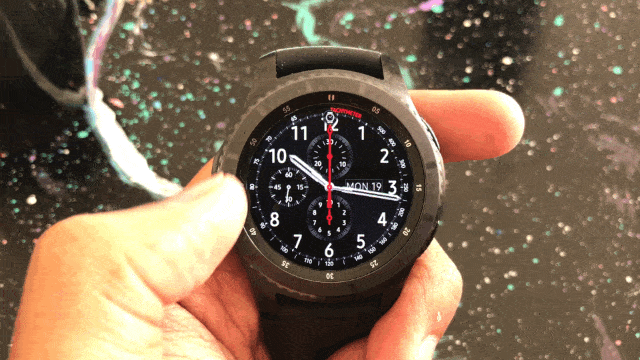
The Gear S3 runs Tizen (version 2.3.1, for those keeping track) and, as usual, it's very smartly laid out to take advantage of that wonderful spinning bezel. Crank it clockwise and you'll get all of your notifications in one place. Spin it the opposite direction to breeze through the widgets you've added (by default, the watch shows you the current weather, favorite contacts, calories burned and what's in your calendar). If you can handle that, congrats: You've basically just mastered the Gear S3's interface.
That said, people responded so well to the spinning bezel that Samsung decided to use it for a few more things on this year's model. Instead of having to swipe on the screen to dismiss a call or disable an alarm, it now takes just a quick twist of the dial. It's much more convenient this way, but one could argue it's a little too easy; I've woken up late just about every day this week because I could just smack and twist my alarm to shut it up.
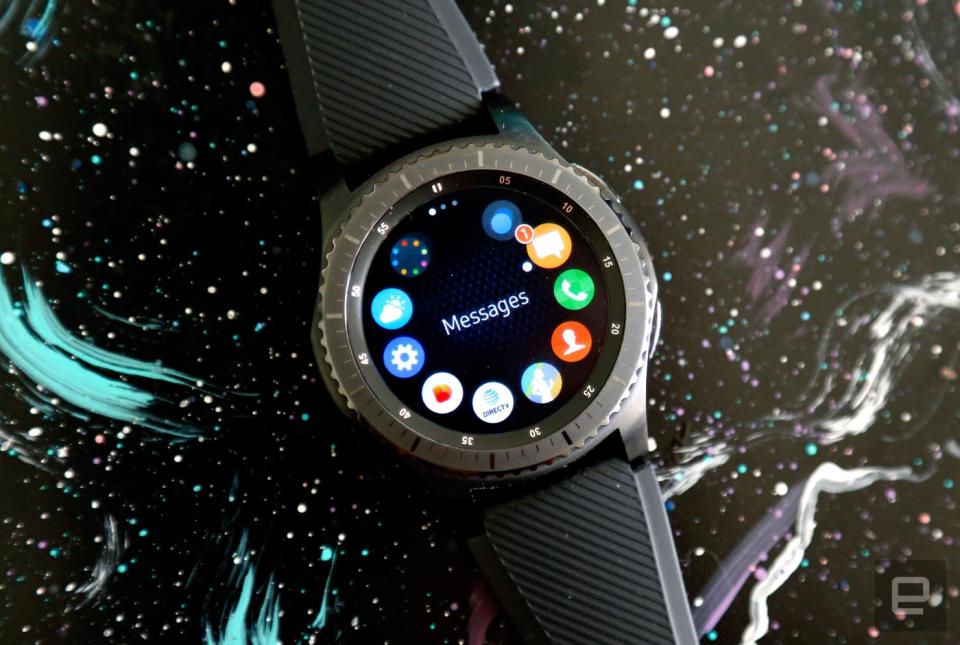
You can also theoretically use the bezel to play games on the S3, but I wouldn't recommend it, for two reasons. First, you'll notice a tactile clicking whenever you turn the bezel, and that could make precision control tricky for some games. Second, and more important, there's a noticeable shortage of great games -- or other apps, for that matter -- available on Tizen.
According to Samsung, there's something like 10,000 apps in the Tizen Store, but just a fraction of those are tuned for the Gear's small display. Even smaller is the number of apps that actually seem worth using, a fact made all the more ironic by the Gear S3's newfound ability to install apps straight from the store, no smartphone connection required.
That's not to say the platform is completely bereft of good software; the preloaded Flipboard app is excellent for skimming headlines at a glance, and Uber does a fine job telling you when that dude in a Toyota Camry is going to show up. Trulia, meanwhile, is a capable tool for learning about the real estate for sale around you; in addition to showing you pictures, the app delivers a primer on local crime levels and school quality before offering you directions. If every major web service could be this conscientious about creating Tizen apps, we'd be golden. Too bad that's definitely not the case.
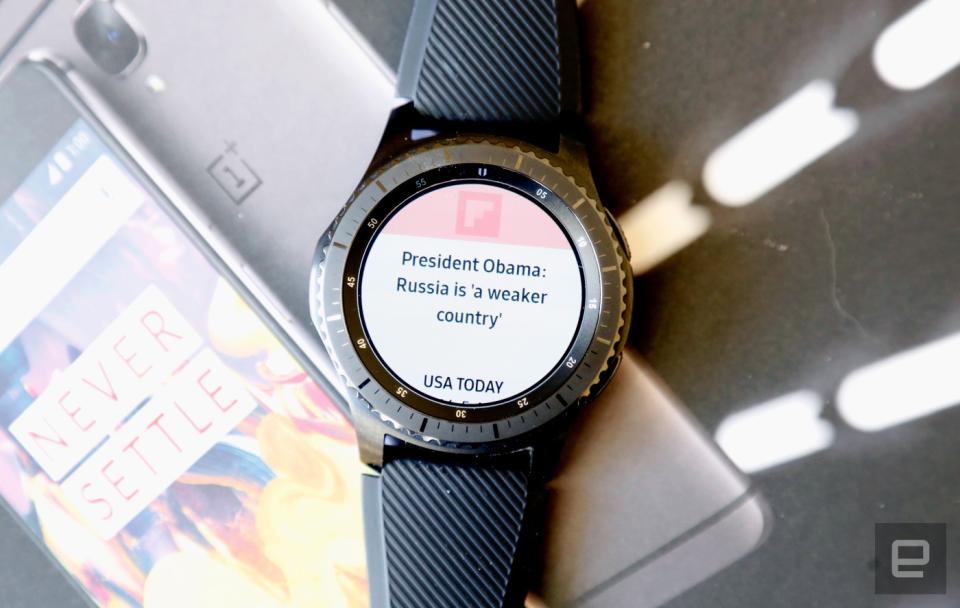
At the very least, the rest of the features here work well. S Voice springs to life when you tap the bottom button, and you can use it to send messages, initiate calls and launch apps, among other things. I rarely had trouble with S Voice interpreting what I was saying, but the delay between issuing a command and seeing the watch respond usually took just a moment longer than I expected. Then again, this sort of delay seems typical of wearables; it's slower than Siri on the Apple Watch Series 2, but only very slightly.
As far as new input methods go, you can also reply to messages by scrawling individual letters on the screen when a notification rolls in. I assumed this would be my least favorite way to respond to people, but I was wrong. Trying to peck out texts -- even short ones -- using a nine-key, phone-style keyboard on my wrist is still more cumbersome.
In use
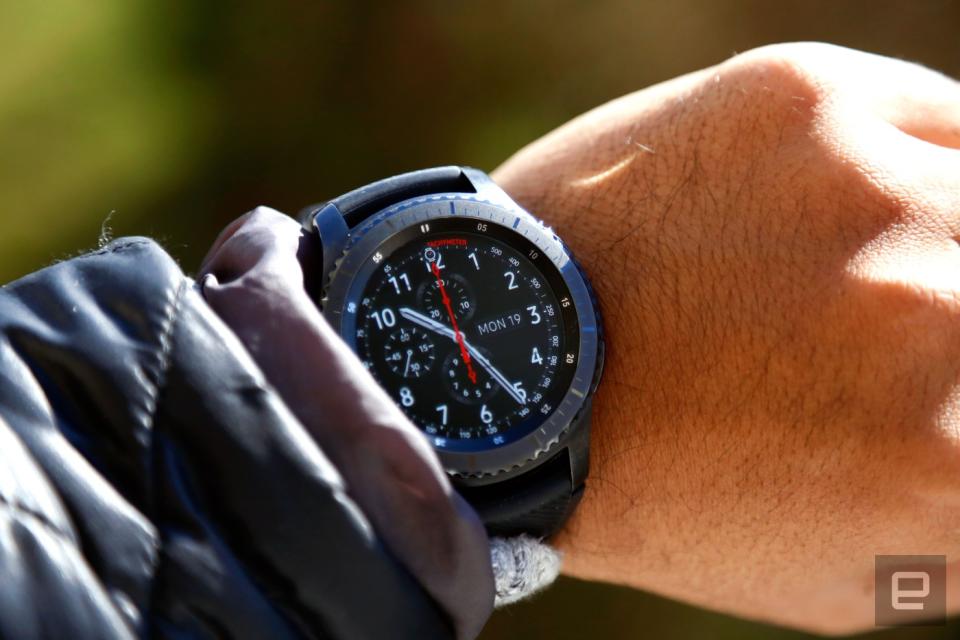
In general, the Gear S3 Frontier nails the basics, but there's also a lot of stuff here that doesn't come standard on other smartwatches. Take that cellular radio, for instance. As mentioned, it allows you talk into your wrist Dick Tracy style, which somehow feels a little silly even in 2016. Still, call quality is surprisingly good, though you'll have to crank the volume on the speaker all the way up if you ever want to use it outside of quiet spaces. The experience works even better when you add AT&T's NumberSync to the mix -- it routes phone calls and messages from your main device (and phone number) to the S3, provided you've added it to a Mobile Share plan. The truth is, most people will never need to do any of this, but either way, it's nice to know that the cellular experience works well.
This is also the first Gear smartwatch to come with MST for mobile payments. I'll spare you the tale of Samsung's LoopPay acquisition -- all you need to know is that you can use the watch to pay for your stuff regardless of the registers your favorite stores use. In other words, you're fine whether there's an NFC/contactless terminal or a traditional card-swiping one. Just hold down the S3 Frontier's top button for three seconds and tap away. You can do this up to 10 times before you have to re-authenticate the S3 from a smartphone, which was more than enough to get me through days at the office when I left my wallet at home. You'll have to punch in a PIN every time you want to try this, though, which can be a pain on such a small keypad.
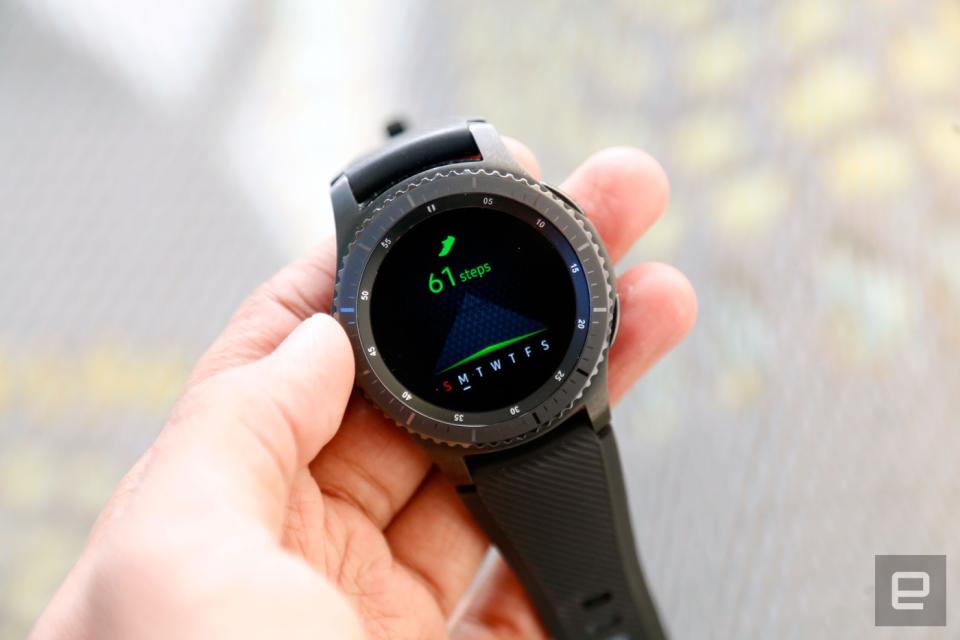
While Samsung makes fitness-focused wearables like the Gear Fit 2, it built a slew of health-tracking features into the Gear S3 as well. The GPS radio, for instance, tracked my trail runs as accurately as the Apple Watch Series 2 did. Neither will replace a full-blown running watch, though it's not as if Samsung and Apple are even trying to put Garmin out of business.
At first, I had the Gear S3 connected to a Galaxy S7 Samsung provided. Is it any surprise, then, that everything worked well? But what happens when you try to use the S3 with a non-Samsung Android phone? Long story short, you'll enjoy almost the same level of functionality, just with more setup involved. See, the beauty of keeping everything within Samsung's walled garden is that most of the software components needed to make a Galaxy play nice with a Gear are already on the phone itself.
By contrast, when I reset the Gear S3 and connected it to the Google Pixel XL, I had to wait for three apps to download and install before I could start using the watch in earnest. And if you want to use features like Samsung Pay, that requires yet another app download; make sure your phone is set to install apps from outside the Play Store. All told, the process took only a few extra minutes, and the Gear S3 experience was mostly identical regardless of which phone it was connected to.
The competition
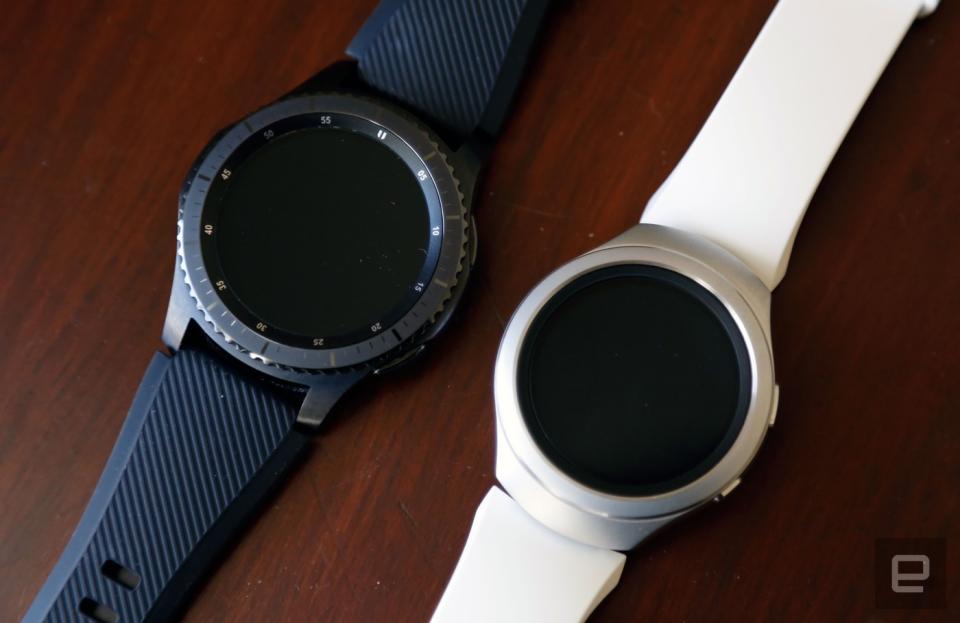
The smartwatch market might be shrinking, but the Gear S3 still has plenty of rivals. On the Android Wear side, two devices stand out. Fans of the Gear S3's rugged style might dig Nixon's the Mission, a similarly masculine wearable. Beyond the peculiar name, Nixon says the Mission is the world's first "action sports smartwatch," because it's built to be water-resistant up to 100 meters and tailored for days at the beach or on the slopes. At $400, it's $50 more expensive than the S3 Frontier, but you do get Android Wear's broader app support, a customizable design and software specifically tuned for surfing and skiing.
For folks who take their exercise seriously, there's also the Polar M600 ($330). It's nowhere near as good-looking as the Gear S3, but you weren't going to buy one of these for its fashion cred anyway. Indeed, the M600 is the most fitness-friendly Android Wear watch to date, pairing an accurate heart rate monitor with an interface tailored to tracking your vitals and workouts.
And of course, there's still the Gear S2, now priced at $230. Rather than discontinue the year-old smartwatch, Samsung is keeping it around as a cost-conscious option and has updated it with some of the S3's features to boot. If Android Wear feels stale to you -- and it does to me -- the Tizen-powered Gear S2 is a fine way to try something new without blowing through your budget.
Wrap-up
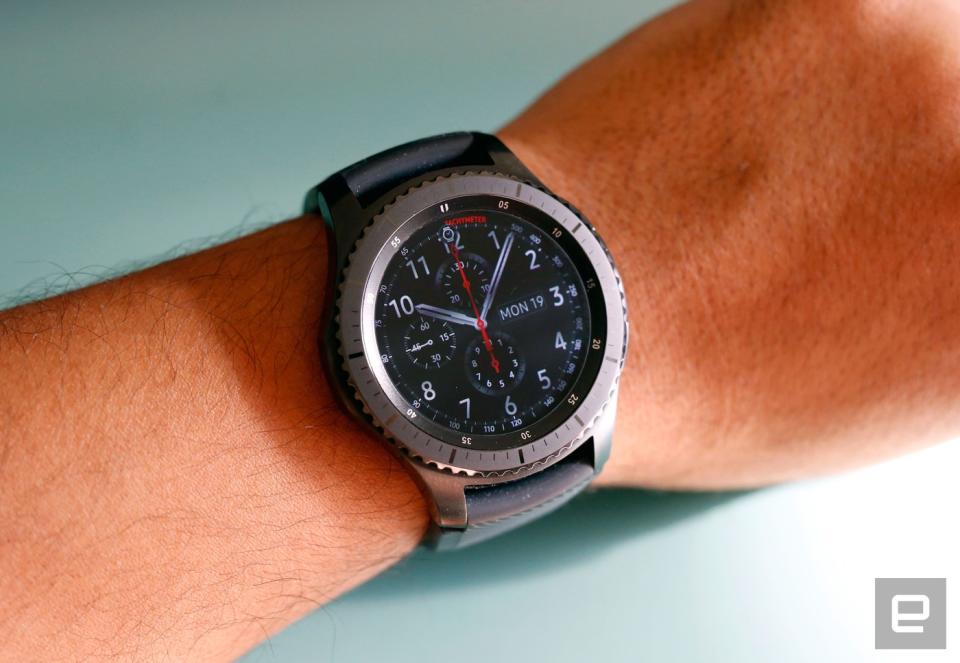
With the Gear S3 Frontier, Samsung did a commendable job building a wearable with a little something for everyone. The device still falls short in a lot of ways, including its overzealous automatic fitness tracking and a limited app selection, even after a year. Still, with so few truly interesting smartwatch options out there, the Gear S3 can't help but feel like a refreshing change of pace. If you're in the market for a high-end wearable, the S3 is worth considering. Just remember: Android Wear 2.0 is coming early next year, so waiting for the next crop of watches is probably the smartest move.














